Seaweeds of the South African South Coast


Order Ceramiales
Family Rhodomelaceae
Laurencia cf corymbosa J.Agardh 1852: 747
Plants purplish-red to dark purple when fresh, fleshy, up to 15 cm tall. Discoid holdfast bearing several (usually) percurrent axes; axes terete, up to 1.5 mm in diameter, irregularly alternately branched in 2-4 orders. First order branches arising irregularly, becoming shorter distally; second-and higher-order branches sub-oppositely branched, shorter; ultimate branches subverticillate, with truncated apices, corymbose when fertile. Branches without basal constrictions. In cross-section axial and periaxial cells not distinguishable. Medullary cells and inner cortical cells larger than outer cortical cells and with intercellular spaces; outer cortical cells dome-shaped, about 15-45 x 10-35 µm, each with one corps en cerise. Reproductive structures not seen.
Collections, ecology and regional distribution
Recorded from De Hoop to Double Mouth (24-43). Epilithic in the lower eulittoral and shallow subtidal zones.
Word distribution: Also reported from Seychelles, South China Sea, Vietnam and Fiji (references in Guiry & Guiry 2017).
Type locality: “Cape of Good Hope”, South Africa (Agardh 1852).
Note: A DNA study of South African Laurencia (Francis et al. 2017) identified a clade (based on 8 specimens) that was provisionally identified as Laurencia cf corymbosa. One of the most distinguishing characteristics is the dome-shaped epidermal cells, each containing one corps en cerise. However, the characteristic corymbose shape of the secondary branches is only evident in fertile specimens.
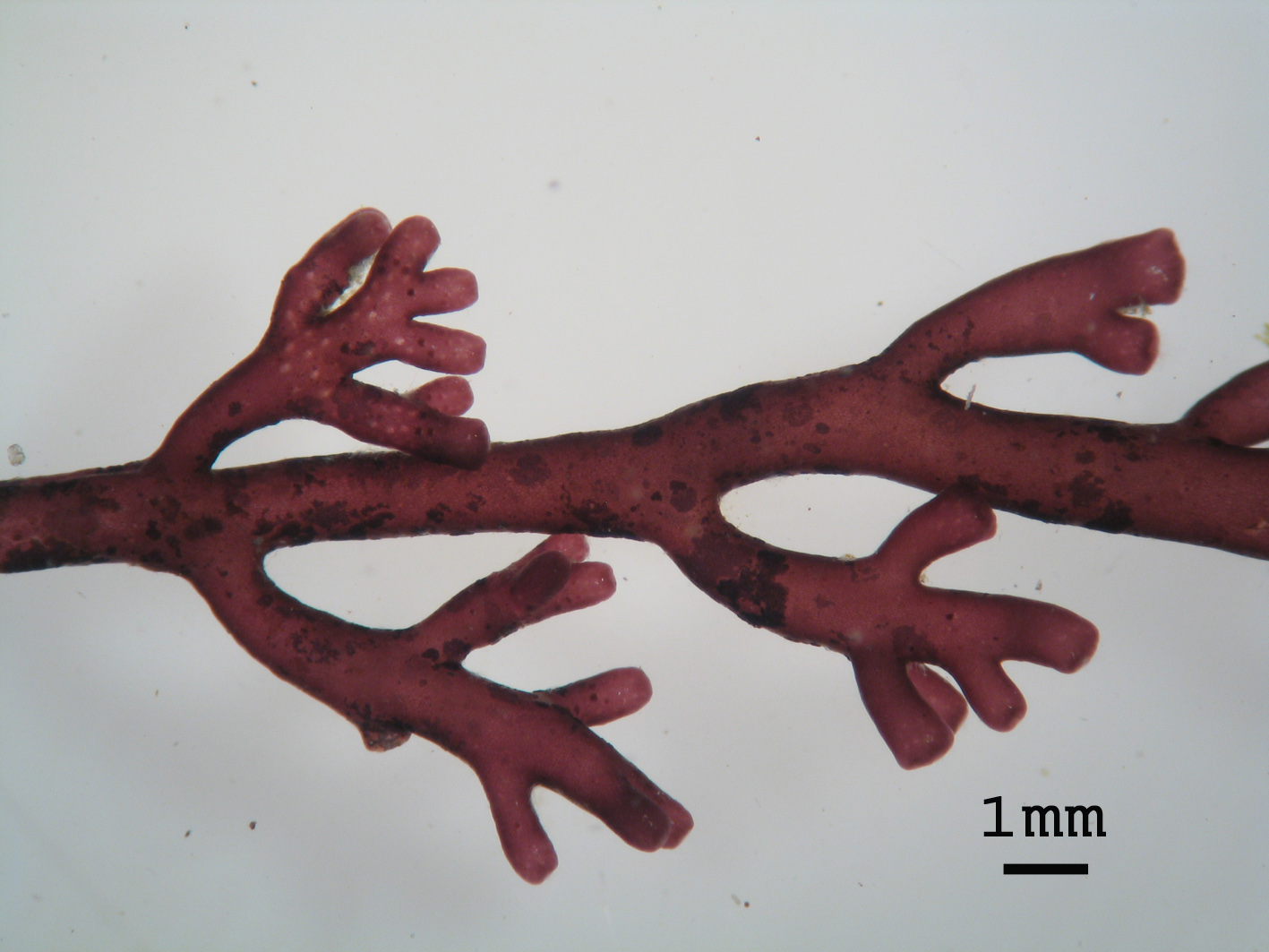
Laurencia cf corymbosa. The pale dots near some apices are spent tetrasporangia, and the dark patches are an endo-or epiphyte.
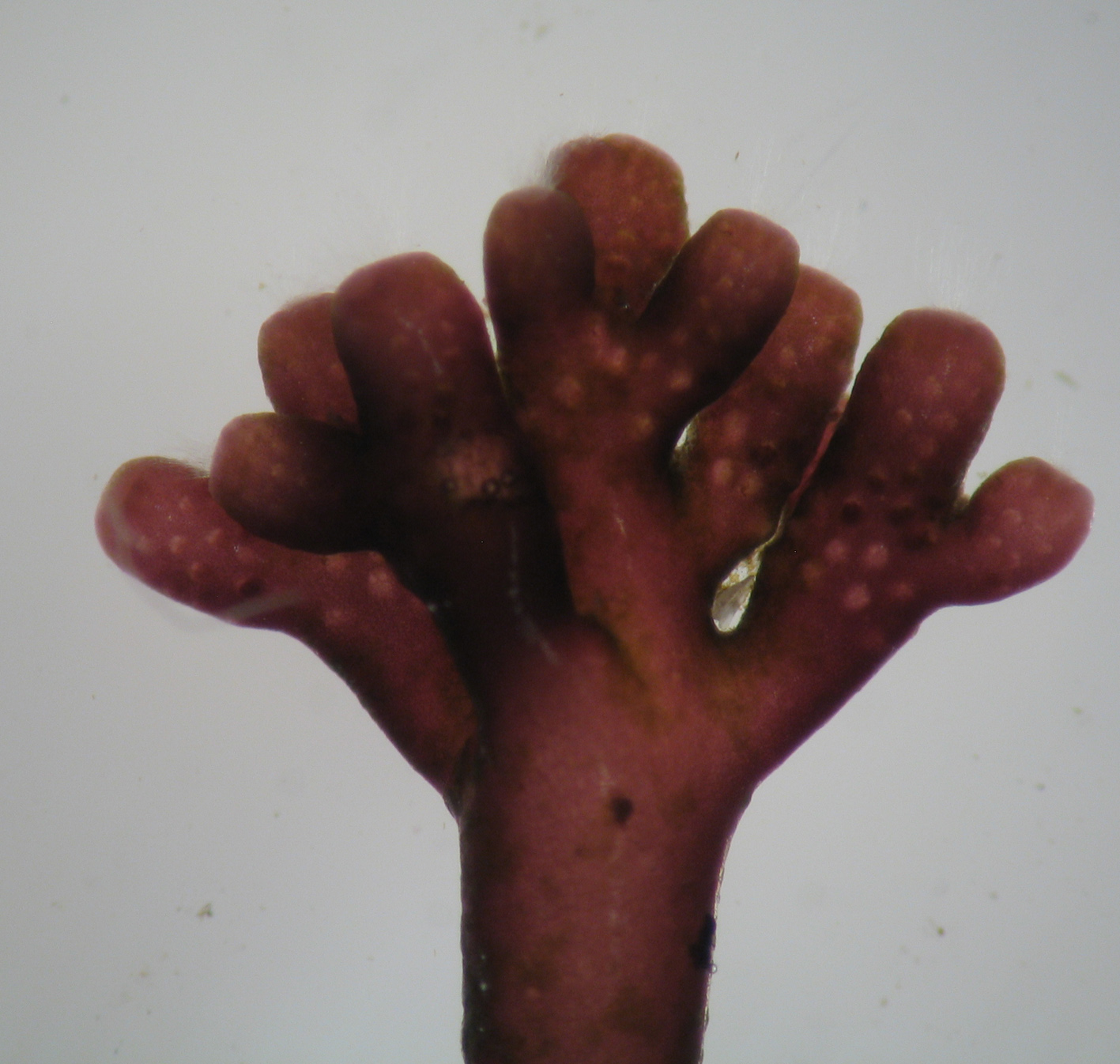
Laurencia cf corymbosa, with corymbose fertile branchlet. The pale spots are where tetrasporangia were released.
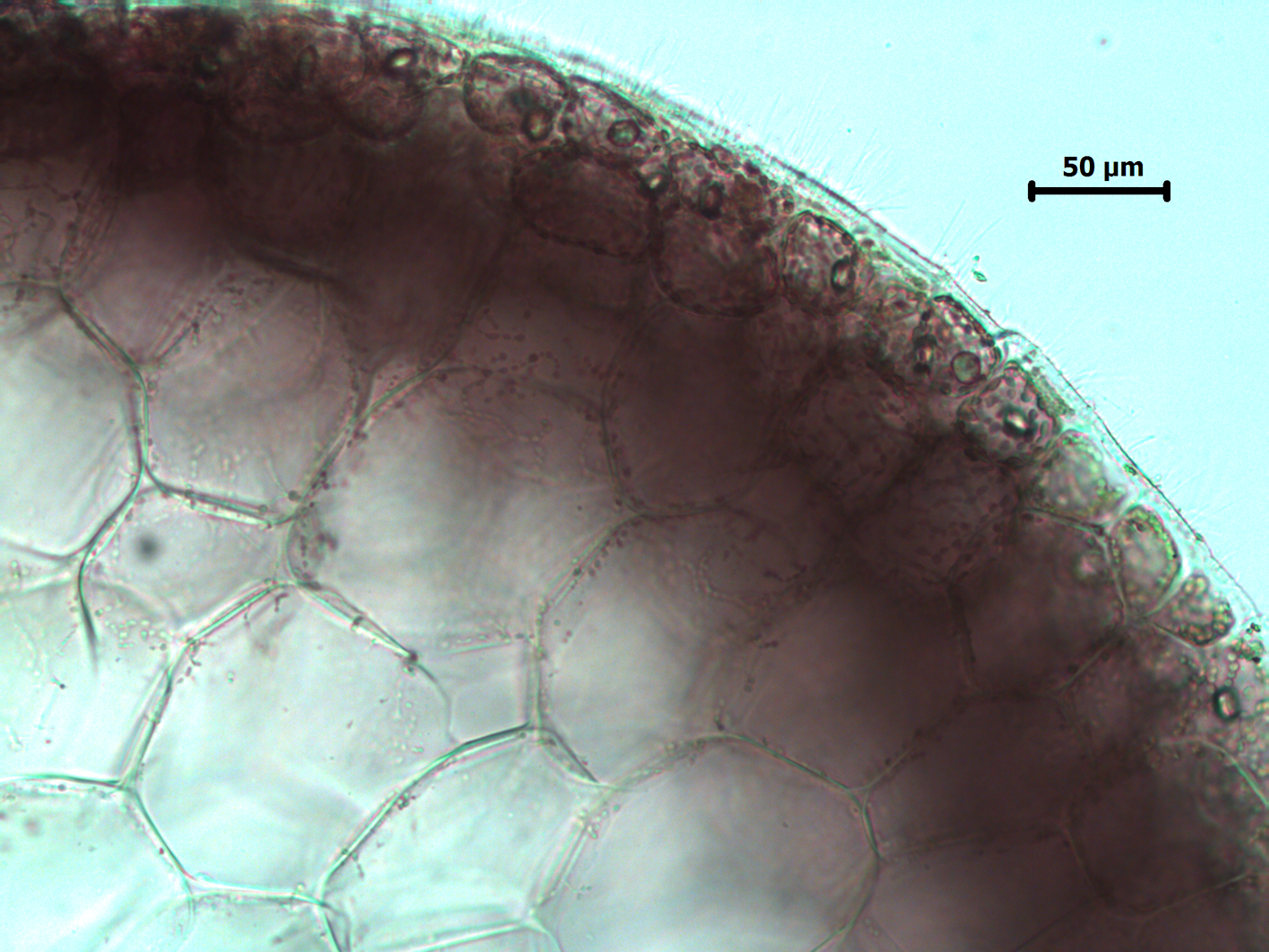
Laurencia cf corymbosa, cross section of outer edge of thallus.
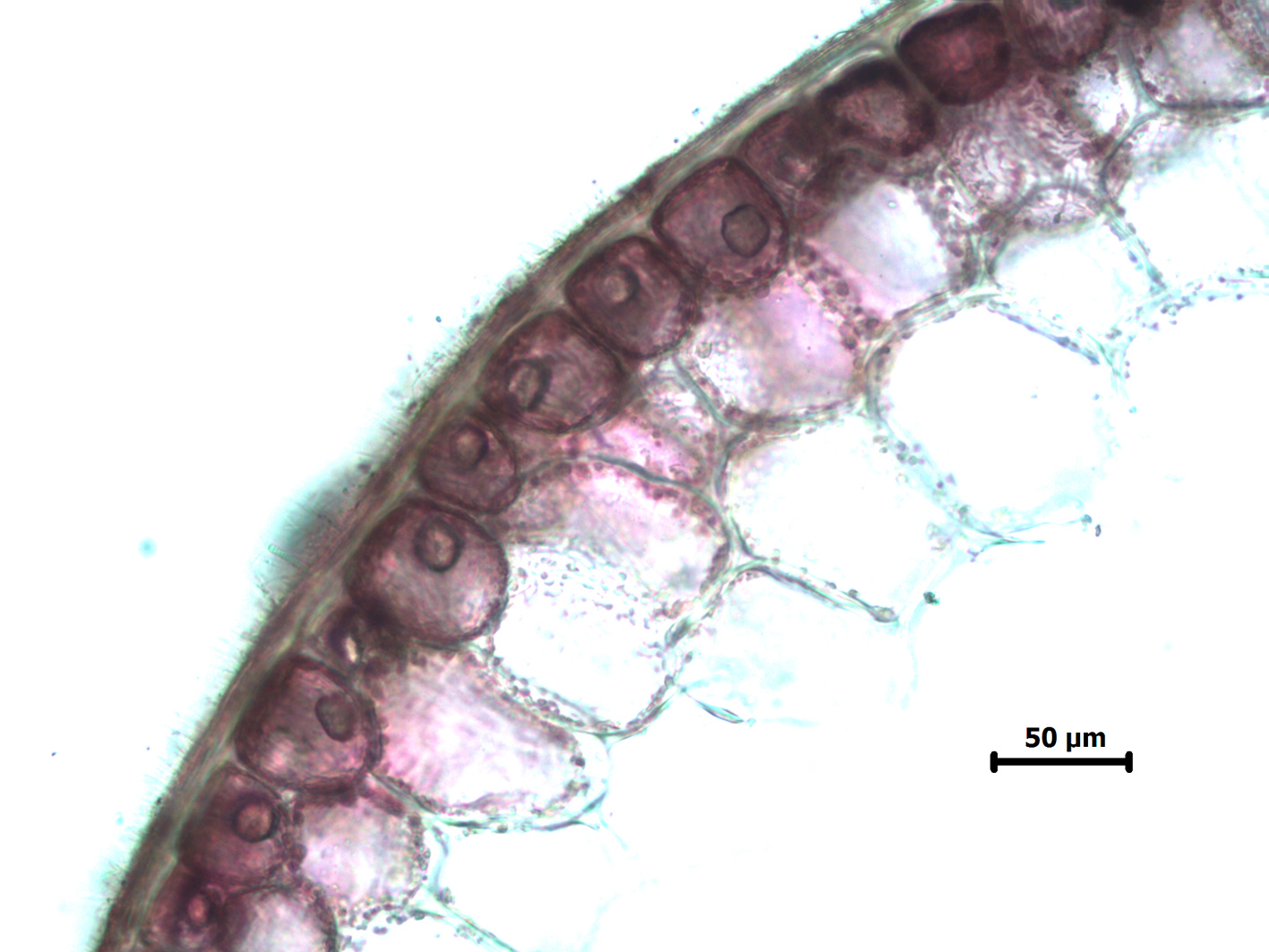
Laurencia cf corymbosa, cross section of outer edge of thallus: detail of inner and outer cortical cells, the outer cells each containing one corps en cerise.
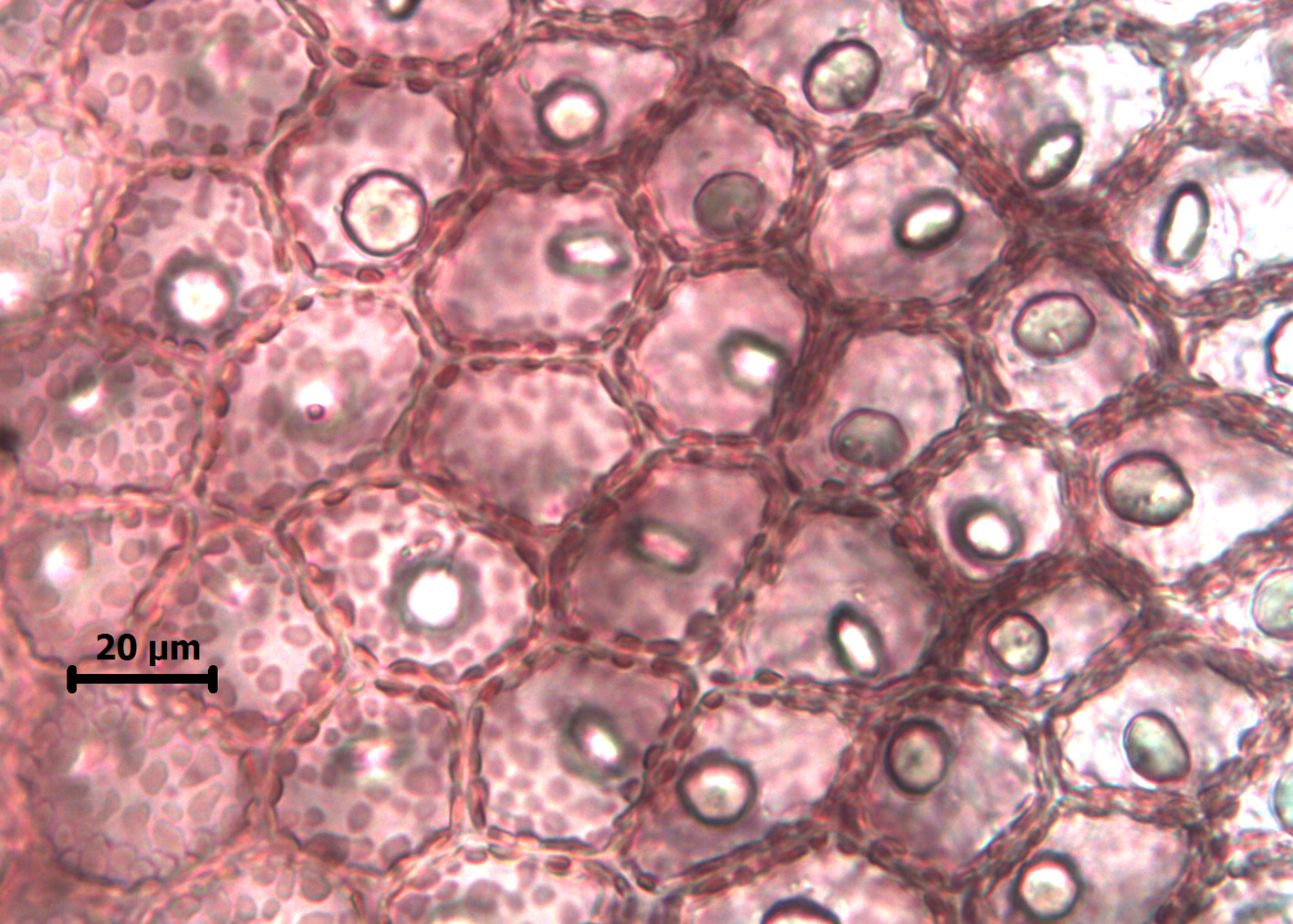
Laurencia cf corymbosa, surface view showing detail of outer cortical cells, each containing one corps en cerise.
References Laurencia corymbosa
Agardh, J.G. 1852. Species genera et ordines algarum, seu descriptiones succinctae specierum, generum et ordinum, quibus algarum regnum constituitur. Volumis secundi: Algas florideas complectens. Part 2, fasc. 2. pp. 577-700 [701-720, Addenda and Index]. Lundae [Lund]: C.W.K. Gleerup.
Francis, C.M., Bolton, J.J., Mattio, L., Mandiwana-Neudani, T. & Anderson, R.J. 2017. Molecular systematics reveals increased diversity within the South African Laurencia complex (Rhodomelaceae, Rhodophyta). Journal of Phycology 53: 804-819.
Guiry, M.D. & Guiry, G.M. 2017. AlgaeBase. World-wide electronic publication, National University of Ireland, Galway. http://www.algaebase.org; searched on 18 April 2017.
Cite this record as:
Anderson RJ, Stegenga H, Bolton JJ. 2016. Seaweeds of the South African South Coast.
World Wide Web electronic publication, University of Cape Town, http://southafrseaweeds.uct.ac.za; Accessed on 07 January 2026.